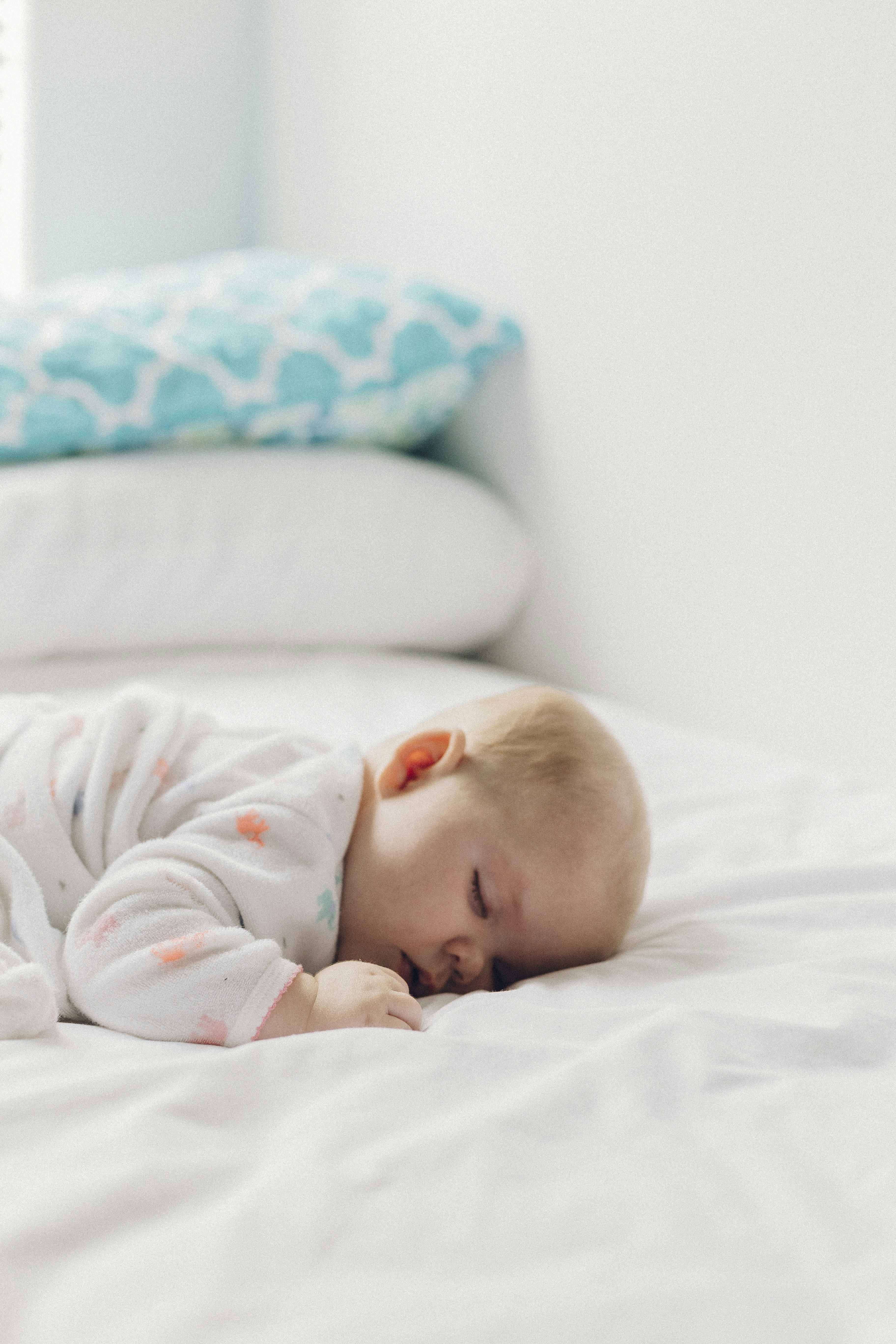Enhancing Sleep For Your Youngster: How a Pediatric Sleep Specialist Can Help


Sleep training your young child can be a difficult job; nevertheless, with the right tools and suggestions, you can help your youngster achieve a peaceful night's sleep. It is very important to remember that sleep training does not occur overnight and that there is no one-size-fits-all method. Every child is different and will respond in a different way to various techniques. The key is to find the best mix of strategies that will work best for you and your young child (child sleep). This guide will provide you with pointers and tricks on how to sleep train your young child so that you can both get a good night's rest.
Comprehending your young child's sleep requirements
There are a lot of misunderstandings about how much sleep toddlers need, however in reality, most healthy young children between the ages of 16 months and 3 years require 12 to 14 hours of sleep every day. The key is to make sure that your young child is getting enough restorative sleep, which implies that she is getting enough time to fully cycle through all the different phases of sleep (including light and deep sleep). Sleep requires modification as children grow, so if you observe that your young child appears to be waking up more regularly, or if she is exhibiting signs of sleep deprivation (such as irritability, tantrums, problem focusing, or hyperactivity), it's worth talking with her doctor and tracking her sleep patterns. If your youngster is younger than 12 months, she needs to be breastfeeding or taking formula (or a combination of both) to meet her dietary requirements and grow at a healthy rate. If your young child is in between 12 and 18 months, she might be able to transition to cow's milk. However, if your child is under a year old, don't present solids or cow's milk up until she is at least 12 months old.
Developing a constant bedtime routine
A consistent bedtime routine is among the most essential aspects of sleep training. When your little one has transitioned to a toddler bed (which is typically around age 2), she will need a consistent bedtime regimen in order to begin getting sufficient sleep. Once your youngster has actually transitioned to a young child bed (which is usually around age 2), she will require a constant bedtime regimen in order to begin getting adequate sleep. You can begin to include your child's bedtime regimen when she is roughly 6 months old, however it's finest to wait until she has actually transitioned to a young child bed prior to you start putting it into location. The key is to make the bedtime routine constant and soothing, which indicates that you need to get rid of all sources of stimulation (including light and noise). Once your child is in bed and ready to go to sleep, it is necessary to keep all sources of stimulation out of her room. Taking these actions will help your child to relax and go to sleep faster.
Developing a nap schedule
Your kid's natural body clocks are what inform her body what time of day it is and when to sleep and wake up. When your child is in between 6 and 12 months old, you still have the ability to override her circadian rhythms and get her to sleep at the times that work best for your household. As soon as your young child is 12 months old, she will start to consolidate all of her naps into one long nap, which indicates that you will no longer have the ability to by hand override her body clocks. Before your kid's first birthday, you can assist her nap at times that are convenient for your family by doing something called "intermittent sleep." Periodic sleep involves rocking your child to sleep, patting her on the back, or putting her in a swing or a swaddle (which will assist her to self-soothe). When your kid is 12 months old, you can no longer do periodic sleep due to the fact that she will have the ability to put herself to sleep and stay asleep on her own. This means that you require to change your kid's nap schedule to fit with your household's sleep routine. The best way to do this is by looking at when your child naturally falls asleep throughout the day and after that adjusting her nap schedule to match that time.
Creating a relaxing sleep environment
Once your child has transitioned to a young child bed, you must start to keep her bedroom totally dark and quiet. It is essential to provide your child with a consistent sleep environment so that she associates going to sleep with the same things every night. Check Here For More will assist her to go to sleep quicker and remain asleep longer. The best way to produce a constant environment for sleep is to get rid of all sources of light and noise from your child's room. Make certain that the curtains are pulled shut, and that the lights are off. If your kid's room is close to a roadway, you may want to buy a pair of noise-cancelling headphones. It's likewise crucial to ensure that your child's space is devoid of clutter, so that there is absolutely nothing for her to end up being distracted by. If you discover that your kid is quickly distracted by products in her space, it may deserve buying some type of sensory-friendly barrier, such as a blanket or a curtain. If you have a baby (baby sleep) or a kid who is sensitive to sound or light, you may wish to get a light blocker or blackout curtains for your child's space.
Responding to night wakings
As a general guideline, it's best to respond to night wakings in a constant and foreseeable way. If your child wakes up throughout the night, attempt to stay calm, however keep the lights off and your voice low and mild. If your child requests for a beverage or a soother, attempt to just give her what she requires to feel comfy adequate to fall back asleep, and then put whatever away once again. If your kid seems starving, offer her a small portion of food. It's finest to avoid providing your toddler a bottle (unless she has transitioned to cow's milk). If your child is old enough to climb into bed with you, it's fine to let her do so, but make sure that you are consistent with this approach. The secret is to react to your kid's needs in a prompt and consistent method, however to ensure that you do not do anything that is going to disrupt her sleep patterns.
Handling development spurt and sleep regression
If your kid is experiencing a development spurt, she is most likely to be going through a growth spurt, which can lead to sleep regression. Sleep regressions happen when your child's sleep patterns have actually regressed back to what they were like when she was younger. This may suggest that your kid is waking up regularly, or that she is awakening earlier and remaining awake for a longer period of time. It is essential to keep a consistent bedtime routine throughout times of growth spurt and sleep regression, however it's also important to make small tweaks to your kid's sleep regimen (so that she isn't as overwhelmed by the modifications). For example, if your kid is getting up earlier than typical, it might be worth feeding her earlier, or adding a short activity before bedtime.
Methods for transitioning to a huge kid bed
The transition from a crib to a bigger bed can be a difficult one. You may wish to transition your kid to a toddler bed or a big kid bed, but she may resist the shift and attempt to climb back into her baby crib. To help your kid make the shift to a bigger bed, it's finest to start slowly and slowly. You can begin by removing the baby crib bumper, and then putting a bed rail on your child's bed so that she can't climb up into her crib. Next, you can start putting your child to bed in a huge kid bed with a fitted sheet, and after that carry on to a regular sheet once she is used to sleeping in a larger bed.
Attending to problems that may arise during sleep training
Sleep training (pediatric sleep)will not work overnight, so it is necessary to remain consistent and relentless. If sleep training doesn't seem to be working for your kid, it might be due to one of the following reasons: Your child has actually gone into a growth spurt, and she is naturally experiencing a regression in her sleep patterns. You have actually carried out sleep training at a time when your kid is going through a developmental leap. Your kid has a medical condition that is impacting her sleep patterns. If you have dismissed these possible causes, it may deserve conference

Today's sleep science blog is sponsored by Hearts & Dreams.
Hearts & Dreams
(406) 551-4083
https://heartsdreams.com

Hearts & Dreams is similar to Taking Cara Babies https://takingcarababies.com.
Hearts & Dreams offers baby sleep coaching.
